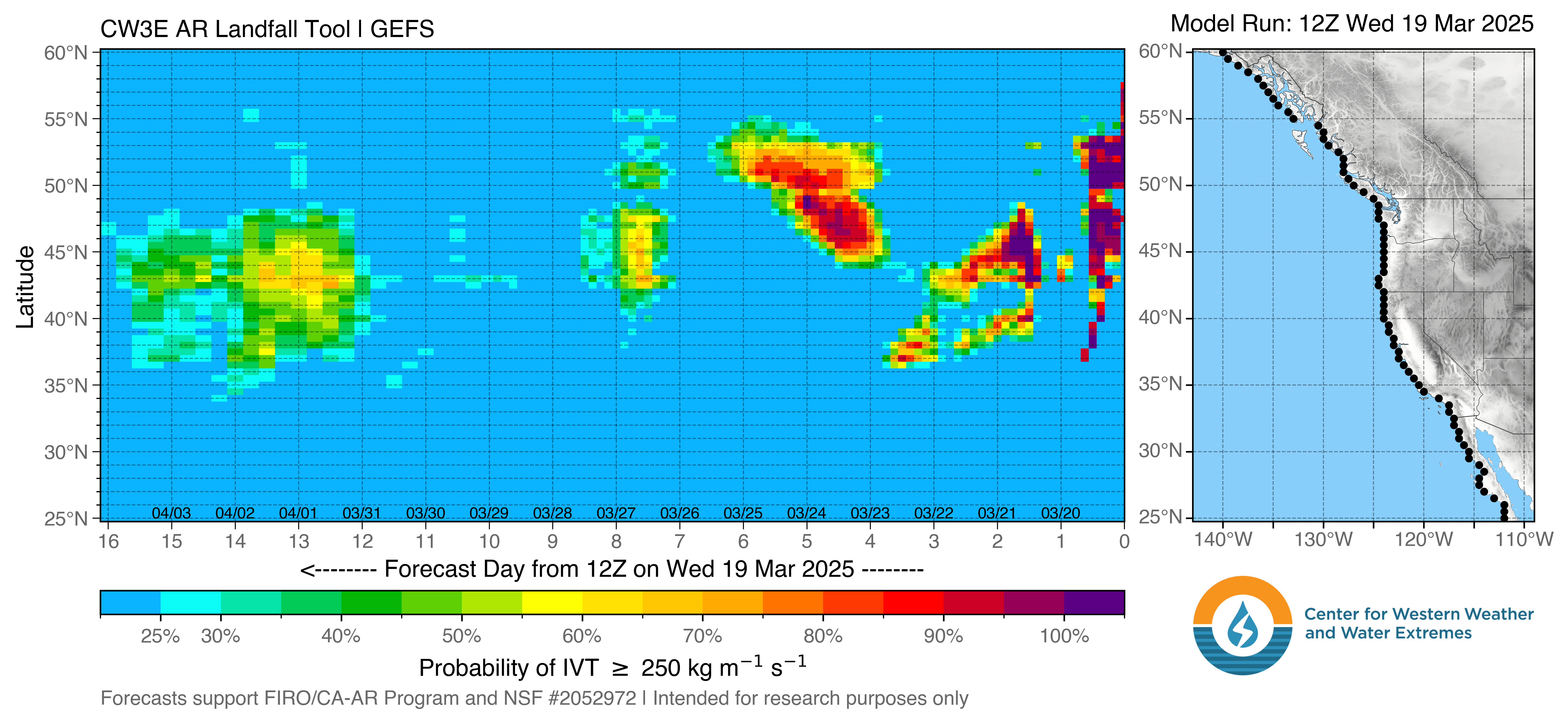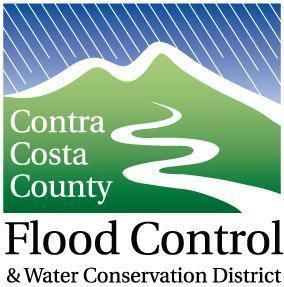Atmospheric Rivers (ARs) are relatively long, narrow bands of moisture in the atmosphere – like rivers in the sky – that transport water vapor from the tropical moist regions along the equator to the west coast regions. Most of our rainfall comes to us via ARs.
The times used in the images below are based on Greenwich time (aka Zulu, Z, or UTC) (see below).
Press Ctrl-F5 to update/refresh all images.
Jump to sections
Plume Map
AR Scale
AR Scale & Integrated Water Vapor Transport (IVT) Analysis/Forecast
AR GFS Ensemble Summary
AR Landfall Tool
Other sites:
Our website
To RainMap
CCCo AQPI Forecast Table
-more-
Atmospheric River Scale Forecast Products.
(most recent)
This shows the location of the forecast for this page (larger circle) and the greatest AR magnitude forecast for points along the west coast.

Top
(most recent)

"A", "B", "C", etc. are for Weak to Exceptional ARs (AR 1 to AR 5) and coincide with the letters in the plot below.
"X"s are for future very week (grey) ARs.
"O"s are for past very week (grey) ARs.
Top
for 38° North (most recent)
You can think of this as a "cross section" view of the left graphic below with time going left to right instead of right to left. Tracing the 38° North latitude line horizontally from right to left on the AR Landfall Tool graphic below should result in something like the grey shaded "plus or minus one standard deviation from the ensemble mean" band you see in this graphic.

Top
CW3E AR Landfall Tool (Most recent)
The graphic below shows the timing of future ARs up to 16 days out as they are forming. For the Bay Area, find the line for 38° North latitude line on the vertical axis. From right being "now" to the left being the future, it indicates the timing and probability of an AR coming onshore. The more purple, the greater the probability. When several ARs are approaching, they are called a "family" of ARs.
You can think of this as a "plan view" of the top left plot in the graphic above. The difference would be that on the graphic above this time starts on the left and goes right. On the graphic below, time starts on the right and goes left.
Find the full description of this graphic on this page.

Top

and Water Extremes (CW3E)
Page Managed by:

Hydrology Section
Contra Costa County Flood Control
and Water Conservation District
255 Glacier Drive
Martinez, CA 94553
(925) 313-2000
floodcontrol @ pw.cccounty.us
for the this data.
Standard Time (Fall/Winter) - Subtract 8 hours from the UTC time (00Z = 4:00PM PST day before and 12Z = 4:00AM PST same day)
Daylight Savings Time (Spring/Summer) - Subtract 7 hours from the UTC time (00Z = 5:00PM PST day before and 12Z = 5:00AM PST same day).
Daylight saving time starts on the second Sunday in March (move clocks forward) and ends on the first Sunday in November (moves clocks back), with the time changes taking place at 2:00 a.m. local time.
"12Z" means "12:00 Zulu Time" or noon GMT.
"00Z" means "00:00 Zulu Time" or midnight GMT.
GMT = Greenwich Mean Time
Top
